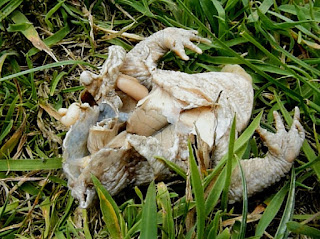On coastlines around the world, sand dunes, found in a range of environments from arctic tundra to tropical regions, that have been sculpted over many decades into a range of intricate shapes, can be found. However unlike many other environments such as forest and swampland, dunes tend to go unnoticed: thought of as nothing more than lifeless waste grounds with no real biological value. But this could not be further from the truth, as these pale coloured mounds of sediment can in fact provide the perfect conditions for a range of organisms to survive and thrive.
Sand dune formation is initiated when coastal rivers and ocean currents transport and deposit sediments (formed of eroded rock, shell fragments and a range of minerals such as silica), onto land surfaces in a mechanism known as longshore drift. Once deposited on to the land, sediments can dry out further away from the coastline, and be shifted by the wind into higher terrains, forming into different compositions as time goes by and creating a range of environments along the way that is of benefit to many organisms. These particular compositions occur in stages/successions, and we will start from the beginning; when the sand leaves the sea.
(1. Embryo dunes/ foredunes.
Embryo/fore dunes are the earliest formation of sand dune, and are created when sand that has recently been blown from the sea and now has been deposited as a layer onto the land very near to the coast, becomes inhabited with plant life. This is no ordinary plant life however, as due to the harsh conditions presented so near the ocean such as high salinity, and strong wind currents, the plant life in question must be capable of surviving in such surroundings. The organisms capable of such a feat includes the very common marram grass which you will have likely seen when visiting the beach yourself. These species have thick cuticles on their leaves that allows the conservation of moisture, and they also have far reaching roots to allow the collection of as much moisture and nutrients as possible from underground. When these plants arrive on these newly deposited layers of sand, their root systems stabilise the sediment and keep it cemented into a dune, rather than being constantly rearranged under the onslaught of the weather This plays a part in forming the strange shapes that characterise these natural environments.
(2. Dune slacks
Dune slacks are depressions that can form in a sand dune, and which collect more moisture than other areas because of the sediments closer proximity to water deposits underground. Due to this extra water content, a different range of organisms inhabits these specific parts of the dune. Organisms such as orchids, toads and strawberries can all be found here, capable of surviving in depressions of sand that they find beneficial due to the protection from wind abrasion, and the need to keep hydrated. As more plant life begins to form the further up the beach you travel, the more plant material is being laid down on the sediment whenever they die. This causes layers of detritus and soil to begin to form, which in turn allows more plant life to grow, and more animal life to appear in search of food and shelter, from lizards, to frogs and small mammals.
(3. Fixed/grey dunes
As times goes by, fixed dunes will form. These dunes are created when layers of soil have continued to be laid down over hundreds of years, and a healthy soil humus now exists: rich in nutrients and water content as well as beneficial microorganisms. This fixed dune environment, positioned the furthest away from the coast than the others, is the richest in life not only due to the fertile soils, but also because it is distant enough from the sea not to feel the full force of the wind and salinity. Fixed dunes not only have greater diversity in plant and animal life, but can even be healthy enough to enable to formation of forests and diverse grassland habitats.
As every coastal sand dune can be originated from the blowing of sediment from the sea, walking from the sea upland can show you the gradual development of the environment: providing you with a story of how small particles of eroded stone has lead to the slow accumulation of life over centuries, until rich bounties of biological wonders were enabled to form a certain distance away. So although to the untrained eye, sand dunes may appear barren and useless, this is in fact a gross misunderstanding, as sand dune are in fact ecological magnificent, and vital to thousands of organisms that inhabit the natural world.
-Thomas Glen
Facebook.com/goodnaturepage















































